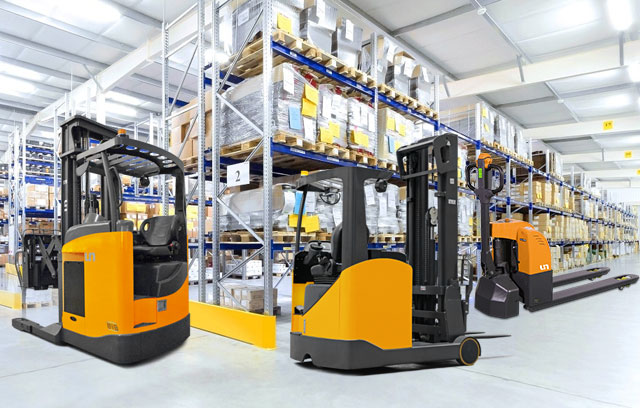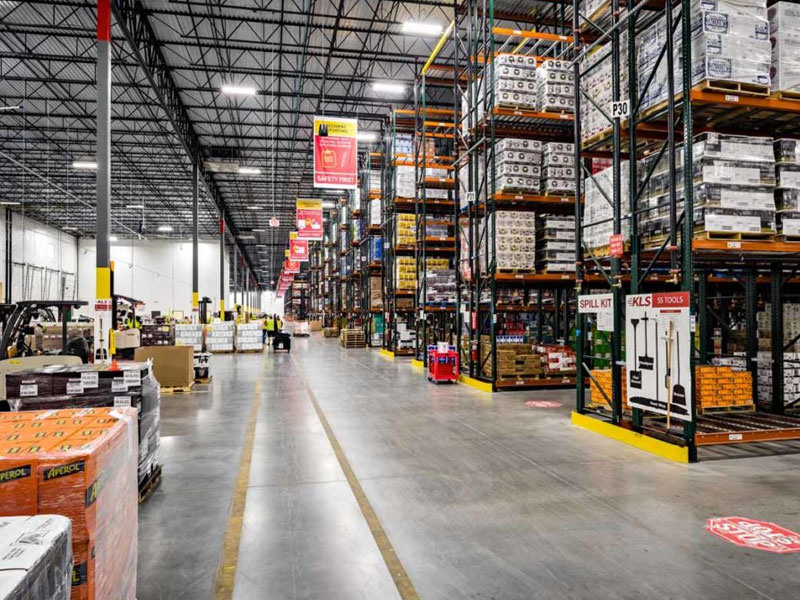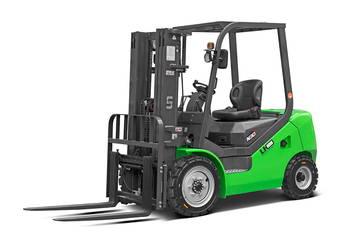Basic definition of rated load and load center
The load capacity of an electric forklift is usually expressed as "rated load capacity". This parameter refers to the maximum load mass that the forklift can safely lift under standard operating conditions. Usually the rated load will be marked as "Rated load x ton, load center distance x mm", for example 1.5 tons @ 500mm.
"Load center distance" refers to the distance between the center of gravity of the cargo and the vertical plane of the fork. The load center distance of most standard electric forklifts is 500mm, that is, the forklift can carry the calibrated rated weight if the center of gravity of the cargo does not exceed this distance. Once the center of gravity of the cargo is shifted outward or the stacking is unstable, the actual load-bearing weight will drop significantly.
Factors in practical applications
In actual use scenarios, there are far more than one rated data that affects the load-bearing capacity of electric forklifts. The following aspects are the key points that operators and purchasing personnel must pay attention to:
* Lifting height: As the lifting height of the forklift increases, its stability weakens, so the actual load capacity will decrease when operating at high levels. Some electric forklift manufacturers will provide "load curve charts corresponding to different lifting heights" in the parameter table to facilitate users to reasonably match the load.
*Accessories: If special equipment such as side shifters and clampers are installed, the payload of the forklift will also be reduced due to additional weight and center of gravity offset. Therefore, when selecting a model, users should consider the impact of the equipment on load capacity.
*Pavement and ramp conditions: When operating on uneven roads or ramps, the stability of the vehicle is affected, and overloading operations may lead to the risk of overturning, especially during unloading or starting stages.
*Battery weight and balance weight: The stability of an electric forklift depends on the balance weight at the rear, and the battery, as part of the weight of the forklift, assumes a stable role in the design. Different electric forklift manufacturers will have different matching battery capacity and vehicle structure, affecting the rated load capacity.
Reading method of data identification and forklift nameplate
When each compliant electric forklift leaves the factory, the manufacturer will install a nameplate on the body to indicate key technical parameters, including the rated load, the center distance of the load, the maximum lifting height, the vehicle weight, the battery specifications, etc. These data are the basis for evaluating the load capacity of electric forklifts.
Users should carefully check the nameplate information before use to avoid overloading. At the same time, pay attention to the "load capacity curve" chart on the nameplate, which shows the actual safe load upper limit at different heights and load center distances, which is the basis for reasonable arrangement of operations.
The role of electric forklift manufacturers in load capacity design
The load capacity of an electric forklift is not estimated based on empirical evaluation, but is scientifically calculated by the manufacturer based on multiple parameters such as mechanical structure, electronic control system, battery performance, and material strength. Professional electric forklift manufacturers usually have advanced design software, strict testing procedures and standardized product verification procedures to ensure that each load parameter has a traceable basis.
Different manufacturers will also provide customized solutions based on application scenarios. For example, in cold chain logistics, heavy shelves or port operations, larger loads, more stable chassis or special equipment support may be required. At this time, choosing an experienced and mature electric forklift manufacturer can provide the company with more adaptable products.
Notes on the user
In daily use, operators should avoid judging whether the goods are overweight based on experience alone, but should make a comprehensive judgment based on the forklift nameplate information, the actual weight of the goods, operating conditions, etc. It is recommended to receive regular training in forklift safety operation and be equipped with a weighing system or load alarm system to ensure the safety of load operation. If users encounter questions during use, it is recommended to contact the equipment supplier or the technical service department of the electric forklift manufacturer in time for guidance to avoid equipment damage or safety accidents caused by overload.











 中文简体
中文简体 عربى
عربى Español
Español














